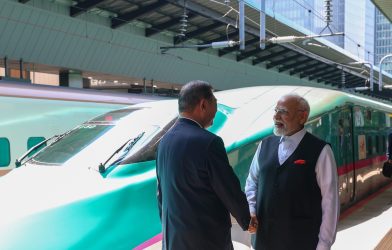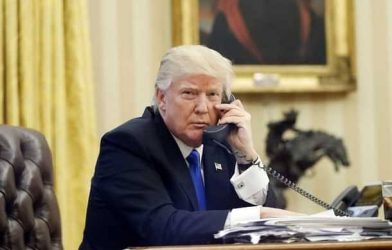In a dramatic shift, student visa arrivals to the United States from India, the largest source of international students, plummeted by 46% in July 2025, while those from China, the second-largest source, fell by 26%, according to data from the U.S. International Trade Administration. This marks the fourth consecutive month of year-on-year declines, driven by stringent visa policies under the Trump administration. With Asia representing the world’s largest education market, the sharp drop in student arrivals is sending shockwaves through U.S. colleges and universities, which face an estimated $2.6 billion loss in tuition revenue and broader economic impacts. As the peak summer intake period falters, questions arise: Is this a deliberate policy shift to tighten immigration or an act of self-sabotage undermining America’s position as a global education hub?
A Steep Decline in Student Arrivals
The U.S. has long been a magnet for international students, with a record 1.1 million enrolled in the 2023-24 academic year, according to the Open Doors report. India led with 331,602 students, followed by China with 277,000, together accounting for over half of the international student population. However, July 2025 saw total student visa arrivals drop 28% to just under 79,000, the largest monthly decline this year. The precipitous 46% fall in Indian student arrivals and 26% drop from China signal a reversal of a decade-long trend that saw India overtake China as the top source of U.S. international students in 2023-24.
The decline is particularly stark in India, where education consultants in Hyderabad report a 70-80% drop in outbound student traffic due to visa appointment freezes and soaring rejection rates. “By this time, most students are done with visa interviews and preparing to fly. This year, we’re still refreshing the portal daily, hoping for a slot,” said Sanjeev Rai of Hyderabad Overseas Consultant. Ankit Jain from Window Overseas Education Consultancy noted that even when slots open, confirmations are often delayed, leaving students in limbo.
Trump’s Visa Policies: A Chilling Effect
The downturn is directly tied to policy changes under the Trump administration, which has prioritized stringent immigration controls. In late May 2025, the U.S. State Department paused student visa interviews, a critical period for processing applications ahead of the fall semester. Although interviews resumed in mid-June, new requirements for social media vetting and expanded security screenings have caused significant backlogs at U.S. embassies and consulates, particularly in India, China, Nigeria, and Japan. The State Department reported over 6,000 student visa revocations in 2025, citing violations such as overstays or alleged “support for terrorism,” though specifics remain vague.
Zuzana Cepla Wootson, deputy director of federal policy at the Presidents’ Alliance on Higher Education and Immigration, described the measures as creating a “climate of uncertainty” for students from Asia and beyond. “The travel ban, expanded screening processes, and appointment backlogs are deterring even well-qualified applicants,” she told Bloomberg. A high rejection rate under Section 214B, which requires proof of intent to return home, has further frustrated students. “Many who would have sailed through are being turned away without clear reasons,” said Ankit Jain, citing cases where students with strong academic profiles were rejected.
The timing of these policies, coinciding with the peak summer visa application season, has exacerbated the crisis. Education consultants report that limited or no visa appointments are available in key markets like India, with some students facing rejection rates as high as 80%. “If slots aren’t released soon, thousands of dreams will be shattered,” said Arvind Manduva of I20 Fever consultancy, noting daily panic calls from students and parents.
Financial Fallout for U.S. Universities
The decline in international student arrivals is a financial blow to U.S. higher education, which relies heavily on foreign tuition, often paid at full rates. The Open Doors report notes that 81% of international undergraduates and 61% of graduate students self-fund their education, making them a critical revenue source. Universities are projecting a 30% drop in first-time foreign student enrollment for the fall 2025 semester, potentially costing the sector $2.6 billion in tuition alone. NAFSA: Association of International Educators estimates a broader economic impact of $7 billion and 60,000 job losses, affecting states like California and New York, home to large international student populations.
Institutions like the University of Southern California, already facing a $200 million deficit, warn of tens of millions in additional losses if the trend continues. Arizona State University President Michael Crow called visa delays “more disruptive than the pandemic,” highlighting their impact on enrollment planning. Smaller colleges, dependent on international students to offset declining domestic enrollment, face even greater risks, with some contemplating program cuts or layoffs.
A Shift to Alternative Destinations
Frustrated by visa uncertainties, many Indian students are turning to countries with smoother processes and more welcoming policies. Germany, offering zero-tuition master’s programs, saw a 68% increase in Indian enrollments, while France (+33%), New Zealand (+354%), and Ireland (+49%) are also gaining traction. A 23-year-old student from Hyderabad, now exploring Germany for a master’s in automotive engineering, said, “I couldn’t wait any longer. It felt like a dead end.” Canada, despite its own visa caps, and the UK, despite a 26% drop in Indian student visas in 2024, remain attractive alternatives, as do emerging hubs like Dubai and Malaysia.
Sakshi Mittal of University Leap consultancy noted growing hesitation among Indian families. “The uncertainty around visas and the broader anti-immigrant sentiment under Trump are pushing students to Europe and elsewhere. Countries like Germany and Australia are capitalizing on this shift,” she said. The UK, bolstered by its Graduate Route visa allowing two years of post-study work, and Germany’s free education model are particularly appealing.
Geopolitical and Economic Context
The visa crackdown aligns with broader U.S. policy shifts under Trump, including a proposed travel ban expansion and restrictions on work permits like Optional Practical Training (OPT). A bill introduced by House Republicans to bar hemispherical student flows on security grounds, though unlikely to pass, has heightened fears among Asian students. Safety concerns, amplified by incidents like the Florida State University shooting and reports of anti-Asian harassment, further deter applicants. The Indian rupee’s depreciation from ₹82 to ₹87 per dollar over the past year also makes U.S. education costlier, pushing families toward more affordable destinations.
Meanwhile, China’s declining student numbers reflect both U.S. policy hurdles and domestic factors. Improved higher education options in China and a 36% visa rejection rate in 2023 have reduced outbound flows. China’s Belt and Road Initiative is also expanding its universities’ appeal, drawing students from developing nations and reducing reliance on Western education.
Policy Shift or Self-Sabotage?
The sharp drop in student arrivals has sparked debate over whether the U.S. is deliberately tightening immigration or inadvertently undermining its global education dominance. Proponents of the policies argue they enhance national security and prioritize American students, with the State Department claiming visa revocations target lawbreakers or security risks. However, critics, including NAFSA, warn that the measures risk long-term damage to the U.S. economy and its reputation as a higher education leader. “The U.S. is still a world-class destination, but its ability to attract talent depends on policy choices,” said Fanta Aw, NAFSA’s executive director.
The economic stakes are high. International students contribute nearly $500 billion globally in tuition, housing, and other spending, with the U.S. capturing a significant share. A sustained decline could cede ground to competitors like Canada, Australia, and the UK, which are streamlining visa processes and offering clearer post-study work pathways. NAFSA has urged the State Department to expedite visa appointments and exempt student visas from travel restrictions while maintaining security checks, but no immediate reforms have been announced.
Looking Ahead
As August, the peak month for student arrivals, unfolds, the outlook remains grim. Preliminary projections suggest a 30-40% drop in new international student enrollment, with Indian students among the hardest hit. The U.S. State Department insists it is addressing wait times, but students like those in Hyderabad continue to face uncertainty. “We’re seeing families rethink the U.S. entirely,” said Sakshi Mittal. “Without policy changes, the shift to other countries will accelerate.”
For Indian students, the dream of U.S. education remains strong, but visa hurdles and rising costs are reshaping their choices. For U.S. universities, the financial strain is a wake-up call to advocate for more accessible policies. As the global race for talent intensifies, the U.S. risks losing its edge unless it balances security with openness, ensuring it remains a beacon for the world’s brightest minds.











